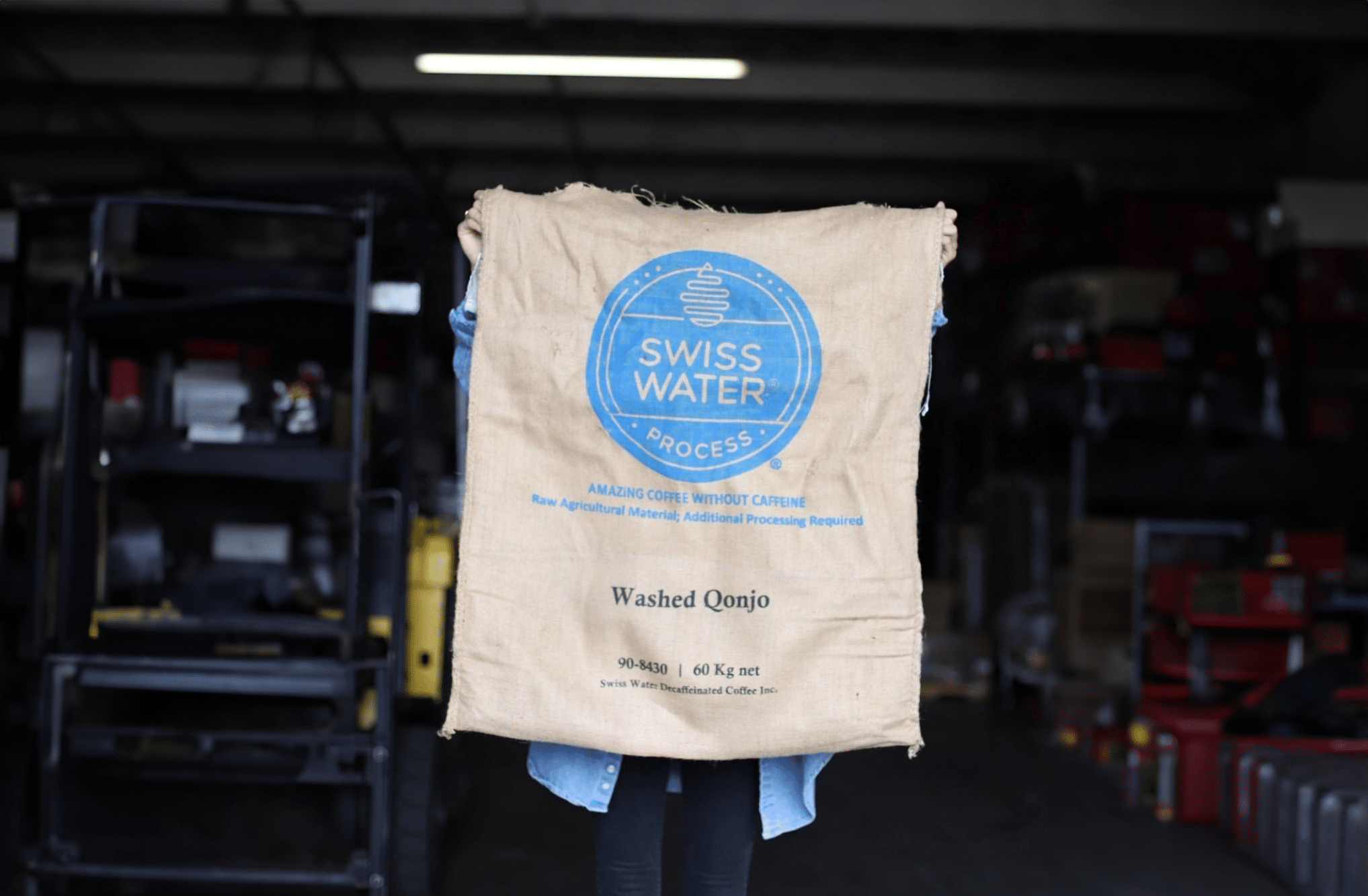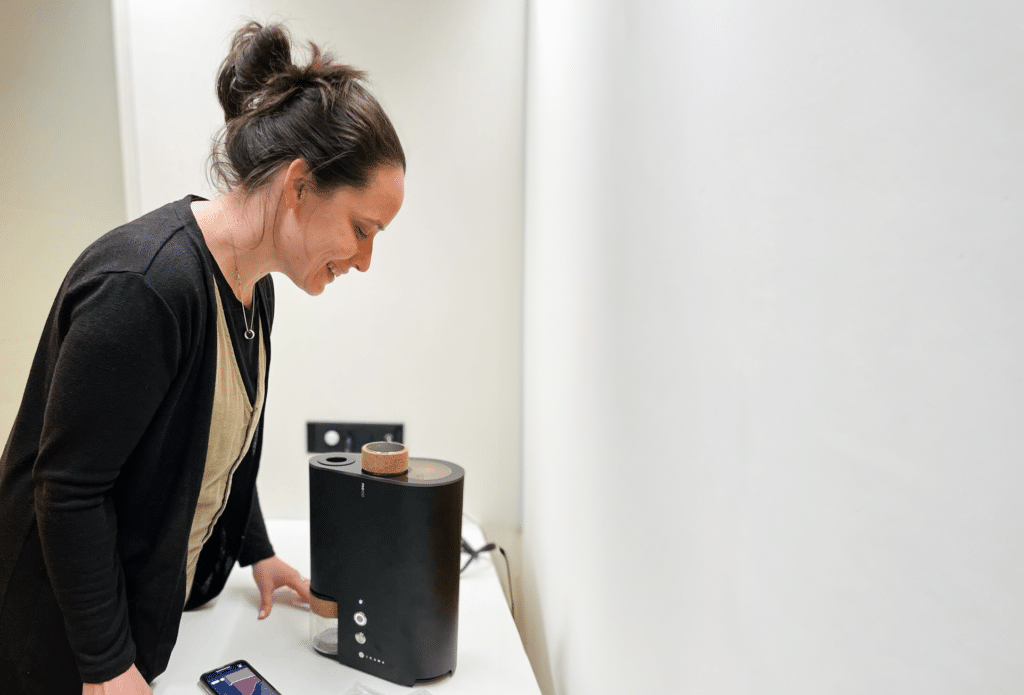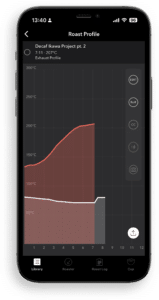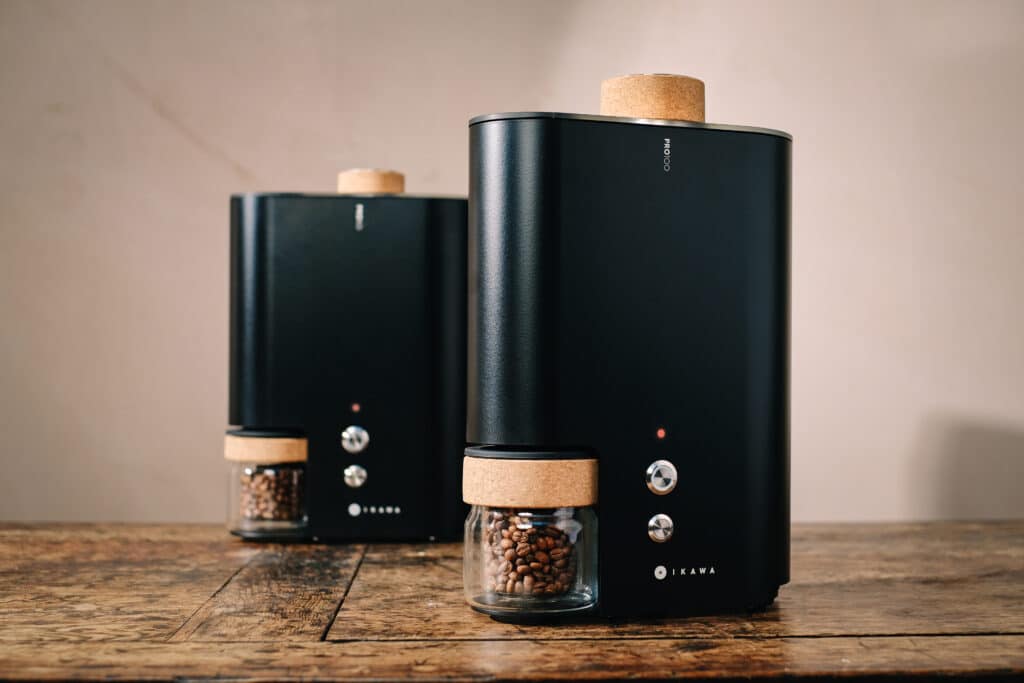
This blog entry is brought to you with the help of our friends at Swiss Water. We reached out because many of you have been asking how should you approach decaf roasting on IKAWA. Swiss Water are world famous for their innovative approach to decaf coffee and their work with coffee producers.
Many people wonder if roasting decaf coffee requires significant adjustments from roasting non-decaffeinated coffees. It’s a wonderful question that shows a roaster truly cares about offering a tasty decaf to their clientele, and isn’t just keeping it on the menu because they feel like they have to. With the advent of convenient, versatile electric sample roasters like IKAWA, the question comes up even more often. In this article, we’ll share some of our tips and experience roasting Swiss Water® Process decaf on IKAWA machines, the advantages of using an IKAWA to profile Swiss Water decaffeinated coffees, and hope to guide folks in a great direction to bring the best out of our decaf.
“One thing that’s often overlooked in roasting decaf is that you can do it well,” says Mike Strumpf, Swiss Water Senior Director of Coffee. “There’s been this idea that you start your roast day with decaf just to warm up the roaster—but there’s no reason to do that,” assures Mike. Though it may seem obvious to state, paying careful attention to roasting your decaf will get you a better result than if you don’t—just like with any other coffee.
“I like to frame decaf roasting as similar to roasting a natural process coffee, because of the processing that happens,” says Mike. “Beans that have undergone our decaf process will move from their endothermic to exothermic states earlier and more aggressively than non-decaffeinated coffees,” he explains. “Once the decaf beans are exothermic, you don’t want to be adding in too much heat, because you can easily add too much roast flavor really quickly at the end of the roast,” he continues. “You find that to be true with a lot of natural processed coffees as opposed to really dense washed coffees which you need to keep pumping heat into or else the roast will stall.“
To apply these principles to the IKAWA, our green coffee team took a crack at roasting three of our Swiss Water Small Batch Series decaffeinated coffees, each of which have unique (and delicious!) flavor profiles we’re already familiar with exploring. We love the IKAWA for special coffees like these, because the low charge weight means that each roast has less riding on it, and that you can often get multiple roasts out of one sample from a supplier. And though each origin is distinct, the Swiss Water® Process restores all the coffees we decaffeinate to a similar moisture content and water activity, so we expect them to perform fairly similarly. Our goal with the profiles our team created was to be able to roast a great tasting decaf in which the coffee origin shines through in the cup.
First, Stacey Lynden, Cupping Lab Manager, roasted both our Guatemala Los Conejos and our Burundi Rotheca Project coffees using a profile she created on an IKAWA Pro100.

“When roasting decaf, I like to start off with a lower charge temperature than I would for regular green coffee. The profile starts at 133C (271F) and gradually ramps up throughout the roast with an end temperature of 207C (approx. 405F). I like to give a little extra air at the beginning of the roast, 81%, to get the coffee moving, but not too much since I find decaf to be a little lighter than regular green coffee. After 30 seconds I start to gradually bring the airflow down, continuing to bring it down throughout the roast, with the last airflow change coming down to 71% at 5:06.
Bringing down the airflow throughout the roast creates more conductive heat, allowing for the sugars in the coffee to properly develop and creating a sweet cup; it also allows me to fully develop the coffee and maintain a relatively light roast profile. I find this roast works well for both cupping and brewing as it highlights both the sweetness in the cup and the fruity or floral characteristics in the coffee. Total roast time is 7:11. Cool down time is 1:05 at 80% fan speed.”
Stacey’s profile:
Her colleague Nelson Teskey, Assistant Director of Coffee, also roasted a couple of coffees—a natural processed Ethiopian and the same Guatemala Los Conejos—on the IKAWA Pro100, but with a different technique. Nelson took a much slower approach with his roasts than he would a non-decaffeinated coffee.
Nelson says:
“The approach I took on this is the same approach when it comes to doing a production roast of decaf, and that is to be less aggressive though turnaround and the drying phase. I find with roasting decaf that if you don’t consider this, it is more likely you will see roasting defects on the beans.
You will see in my profile that I took a much slower approach at the beginning of the roast with fan speed and temperature, and I never fully get to 100% fan speed. Once through the drying phase I am more aggressive with the heat and consistent with my fan speed. One thing to note with fan speed once you get close to first crack is try not to get to 100% fan speed as you will notice a higher percentage of your roast in the chaff jar by about 2-3%, although I didn’t notice a degradation in cup quality if I was at 100% fan speed.”
Nelson’s profile:
Both Nelson and Stacey used the profiles they devised to produce tasty coffee for each of these Small Batch Series offerings. While Nelson went for longer development with a slightly darker roast, Stacey went for a lighter roast. But with the versatility of IKAWA’s profiling, we’re confident a roaster could use Nelson’s profile but end it 30 seconds sooner for a similarly delicious, and lighter, result.
What’s left to note? One thing worth mentioning is that decaf will often follow the same temperature curve that roasted coffee will, but a roaster can be deceived by the external color of the beans. We like to remind people that when they’re evaluating their roast development color, to do it on ground coffee instead of whole bean.

As coffee geeks, we find the ability to really delve into the data behind our roast profiles with the IKAWA, and share them among peers, to be tremendously exciting. Seeing these innovations applied specifically to decaf makes us even happier, because we know it’s going to allow folks at all experience levels of coffee roasting to more easily grasp the nuances of roasting decaffeinated coffees. This will allow roasters to elevate their own decaf roasts and make truly delicious decaf a reality for more people everywhere!
Cheers to that!